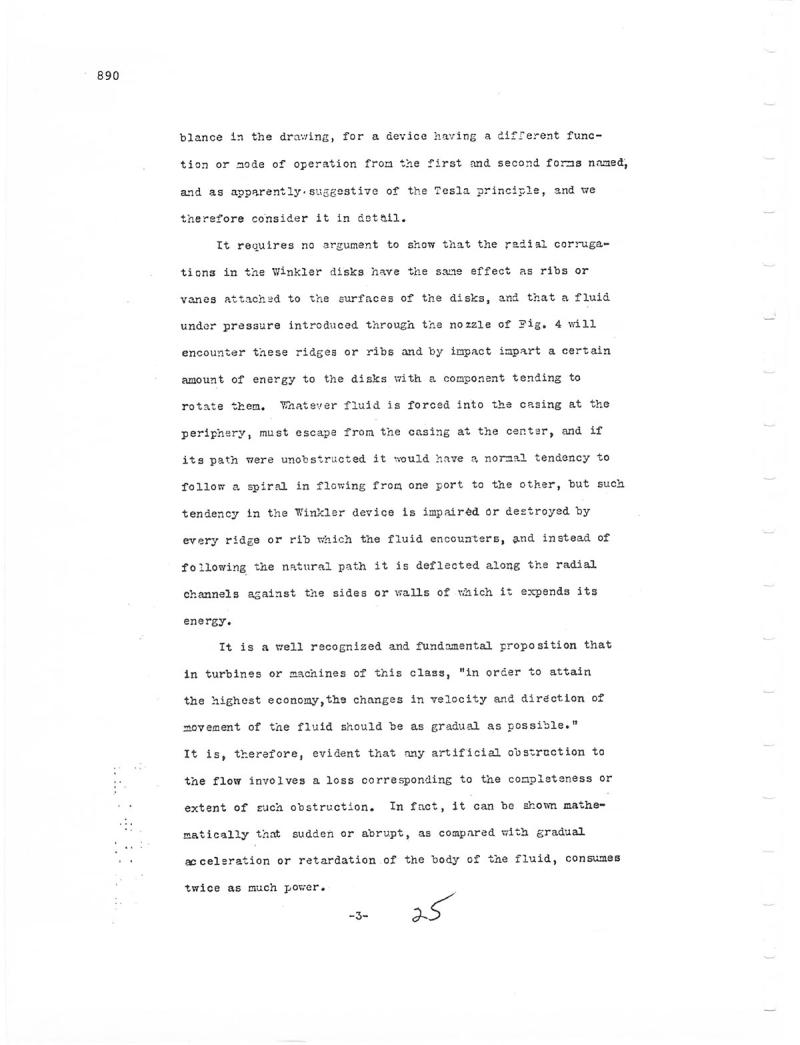
Nikola Tesla Patents
Nikola Tesla U.S. Patent 1,061,206 - Turbine Patent Wrapper Page 26
890 blance in the drawing, for a device having a different function or mode of operation from the first and second forms named, and as apparently suggestive of the Tesla principle, and we therefore consider it in detail. It requires no argument to show that the radial corrugations in the Winkler disks have the same effect as ribs or vanes attached to the surfaces of the disks, and that a fluid under pressure introduced through the nozzle of Fig. 4 will encounter these ridges or ribs and by impact impart a certain amount of energy to the disks with a component tending to rotate them. Whatever fluid is forced into the casing at the periphery, must escape from the casing at the center, and if its path were unobstructed it would have a normal tendency to follow a spiral in flowing from one port to the other, but such tendency in the Winkler device is impaired or destroyed by every ridge or rib which the fluid encounters, and instead of following the natural path it is deflected along the radial channels against the sides or walls of which it expends its energy. It is a well recognized and fundamental proposition that in turbines or machines of this class, "in order to attain the highest economy, the changes in velocity and direction of movement of the fluid should be as gradual as possible. " It is, therefore, evident that any artificial obstruction to the flow involves a loss corresponding to the completeness or extent of such obstruction. In fact, it can be shown mathematically that sudden or abrupt, as compared with gradual acceleration or retardation of the body of the fluid, consume s twice as much power. 25 -3
